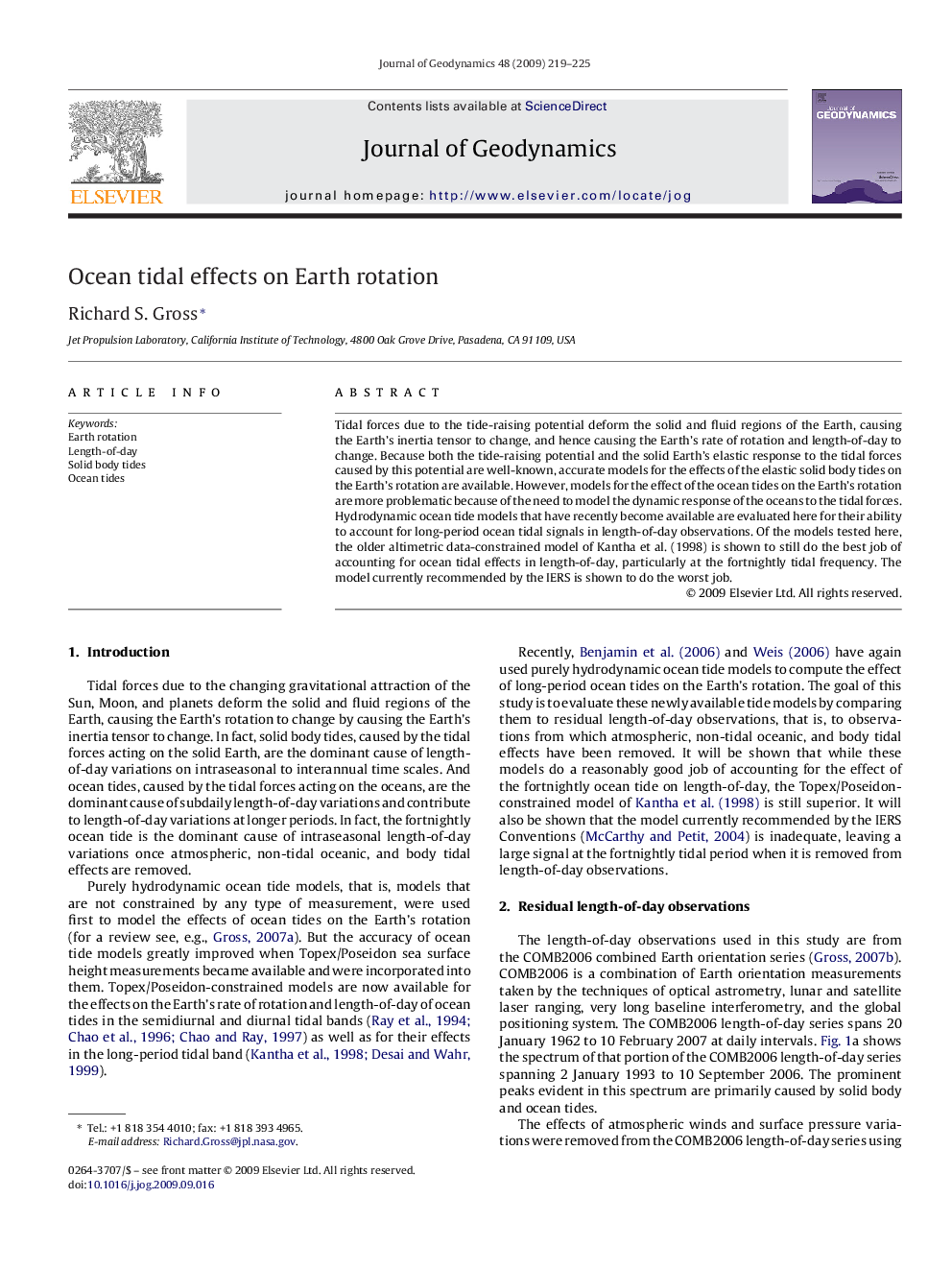| Article ID | Journal | Published Year | Pages | File Type |
|---|---|---|---|---|
| 4688629 | Journal of Geodynamics | 2009 | 7 Pages |
Tidal forces due to the tide-raising potential deform the solid and fluid regions of the Earth, causing the Earth's inertia tensor to change, and hence causing the Earth's rate of rotation and length-of-day to change. Because both the tide-raising potential and the solid Earth's elastic response to the tidal forces caused by this potential are well-known, accurate models for the effects of the elastic solid body tides on the Earth's rotation are available. However, models for the effect of the ocean tides on the Earth's rotation are more problematic because of the need to model the dynamic response of the oceans to the tidal forces. Hydrodynamic ocean tide models that have recently become available are evaluated here for their ability to account for long-period ocean tidal signals in length-of-day observations. Of the models tested here, the older altimetric data-constrained model of Kantha et al. (1998) is shown to still do the best job of accounting for ocean tidal effects in length-of-day, particularly at the fortnightly tidal frequency. The model currently recommended by the IERS is shown to do the worst job.
